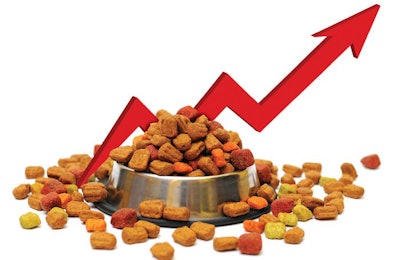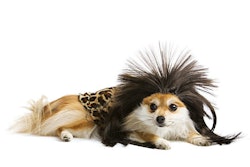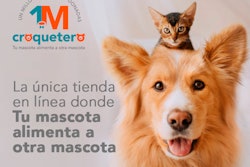
Pet food spending by U.S. consumers increased by more than 31% year over year (YOY) by mid-2020, according to data from the U.S. Bureau of Labor Statistics (BLS) reported and analyzed by John Gibbons, aka the Pet Business Professor.
This huge leap in reported spending corroborates similar growth in spending recorded by Packaged Facts, plus healthy pet food sales increases in 2020 reported by the American Pet Products Association, Euromonitor and others. (Note that Packaged Facts’ data showed a 15% rise in spending on pet food and treats in the U.S., though that was for the full year. The U.S. government notoriously moves very slow, even during normal times; hence, the latest BLS data, recently released, goes only through mid-2020. The agency’s full-year 2020 data is expected in September 2021, according to Gibbons.)
COVID-19 impact on pet food spending
By mid-year 2020, U.S. pet food spending reached nearly US$40 billion—US$37.96 billion, to be precise, according to the BLS data. That represented a US$9.06 billion rise from mid-year 2019, Gibbons reported.
He noted that pet food spending had actually started to grow—“recover,” even—in the second half of 2019 after declining unexpectedly, at least by historical patterns, in 2018. That decrease was likely due to the Food and Drug Administration’s (FDA) investigation into and announcements about a potential link between grain-free pet food and canine dilated cardiomyopathy (DCM). Which makes sense, as sales data from Nielsen and others showed a definite fall in grain-free sales in 2018 and 2019, and that category accounted for a significant share of the overall U.S. pet food market.
“In the second half of 2019, we started to see a recovery from the overreaction to the FDA warning, and spending increased by US$2.3 billion,” Gibbons wrote. “Then came 2020. The recovery was continuing but a new outside influence was added, which had a massive impact on U.S. consumers—the COVID-19 pandemic. In March nonessential businesses were closed. This also produced a wave of panic buying in some truly essential product categories. In the pet industry, there is only one truly essential category—pet food.”
Ultimate pet food spenders?
We all know the rest of that story, but Gibbons’ analysis provides additional insights into who actually spent more on pet food: namely, higher-income U.S. households as well as baby boomers. Specifically, households with incomes greater than US$70,000 increased their spending by 25% in the first half of 2020, and those earning more than US$100,000 increased spending by more than 20%. Again, this matches pet food sales data from Euromonitor and other sources.
Looking at pet food spending by age group, U.S. consumers 55 and older grew theirs by nearly 23%, per the BLS data, while spending among two other broad age groups, under 35 and 35-to-54-year-olds, actually declined slightly YOY.
Based on this data, Gibbons provided a profile of the “ultimate pet food spending household”: 55 to 64 years old (aka boomers), married couple with their oldest child over age 18, two earners but self-employed, income of US$100,000 to $150,000 and living in an area with a population greater than 2,500.
However, he also pointed out that their status as “super pet parents” may have influenced the BLS spending data, which traditionally is collected via interviews, surveys and even hard-copy diaries—a process that, like everything else, was upended by the pandemic. Because of lockdowns, all in-person interviews or diary collection by BLS personnel had to move online or via phone calls, which dampened the response rate.
To compensate, BLS added households to its survey process, Gibbons said, which is where the boomer influence may have played a role. “They are beyond conscientious regarding their pets so it would be expected that they would be the mostly likely to respond to a survey conducted under the difficult circumstances caused by the pandemic,” he wrote. “This could give their big pet food spending a disproportionate share of the sample and significantly drive up the mean.” He also noted that the large variation was in pet food alone and not widespread in other categories; the variation in total spending was low.
Still, Gibbons concluded, the BLS survey was “demographically representative with no overall bias. The pet food spending may be a little high, but it is extremely likely that there was a big lift in the first half of 2020.” And pet food and treat sales data bear that out.
















